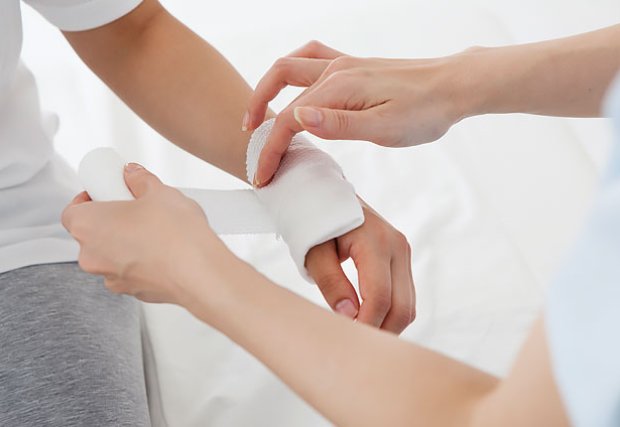How to perform wound dressing safely?
If wounds are kept exposed for a long time, then infections might arise, which is why on-time wound dressing is essential. The wounds need to be dressed properly so that coming out of blood can be prevented. A sThis kind of dressing is often termed surgical dressing. terile dressing is the most preferred option as, in this case, damages are covered after applying for antiseptic medicines.
 Clinical dressing of wounds can be of varied types; thus, the medical expert will choose the right one per your wound nature. These medicines prevent blood from coming and play a great role in avoiding infections. Sometimes, treatments are also applied to reduce swelling and pain.
Clinical dressing of wounds can be of varied types; thus, the medical expert will choose the right one per your wound nature. These medicines prevent blood from coming and play a great role in avoiding infections. Sometimes, treatments are also applied to reduce swelling and pain.
Key purposes:
- Both wound healing and granulation can be promoted.
- Unwanted wound contamination can be prevented.
- Acute comfort is provided.
- Aesthetic sense can be fostered.
- Medication is being applied to wounds.
- The wound is supported ad immobilized.
- Wound drainage can be prevented.
- A dry environment is offered to prevent exposure to infections or micro-organisms.
Steps involved in surgical dressing:
- The patient needs to be comfortably positioned first, exposing the dressing site.
- Dressing-pack needs to be opened to cover the wounds.
- The extra cotton ball needs to be taken to cover larger wounds.
- The cleaning solution should be taken within a dressing-cup for applying the same easily over wounds.
- The pack is to be covered without inner-layer contamination.
- The outer dressing needs to be removed for placing the dressing-mackintosh.
- The adherent adhesive can be removed with ether.
- One layer of dressing should be removed in case of wound drain-out.
- Surgical hand-washing is necessary to perform.
- Wound contamination can be prevented by wearing gloves.
- Cotton balls need to be lifted with thump forceps, and those forceps should be dropped into a cleanings-solution afterward.
- If the wounded area is not cleaned thoroughly, it might be exposed to increased infection.
- Only medicated gauge pieces are to be used in this regard. These gauge pieces need to be nicely covered with dry ones to enhance protection and can be applied especially for larger injuries.
- Used gloves are to be discarded.
- The dressing should be secured with strong adhesive bandages.
These are the few essential steps that are involved in dressing wounds. Sometimes, these dressing steps are needed to conduct Slipped disc treatment at home comfortably.
Wound-care types:
- Hydrogel: Infected, excessively burned, necrotic and painful wounds can be covered with Hydrogel-dressing.
- Hydrocolloid: venous or pressure ulcers and moderately drained injuries demand hydrocolloid dressing.
- Collagen: Large wounds like high-degree burns, surgical wounds, transplant sites, bed sores, ulcers, and stalled or chronic injuries can be dealt with with collagen-dressing.
- Alginate: High to moderate wounds and pressure or venous ulcers require alginate dressing.
Aftercare instructions:
- The patient should rest for some time rather than immediately rushing home.
- Dressing materials should be properly disposed of, and equipment needs to be removed.
- Dressing-type needs to be recorded in files to be included in the patient’s medical reports.

Nowadays, wounds can be easily dressed at home if necessary equipment is present. Best dressing techniques must be implied so the injuries can be wrapped protectively. The DIY dressing is nothing but one of the most prominent aspects of home health care these days.





